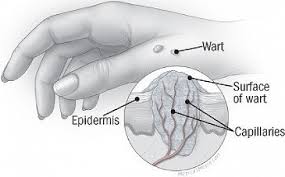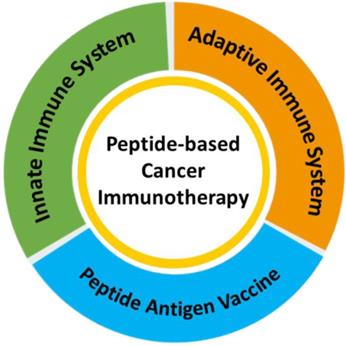
Warts, those pesky skin growths caused by the human papillomavirus (HPV), are not only unsightly but can also be quite a nuisance. These small, rough bumps can appear anywhere on the body and are often a source of embarrassment and discomfort for those affected. From impacting self-confidence to causing physical discomfort, warts can significantly detract from one’s quality of life.
Successfully removing warts is crucial not only for physical well-being but also for emotional health. The visible presence of warts can lead to self-consciousness and embarrassment, affecting social interactions and overall confidence. Additionally, warts can cause physical discomfort or even pain, especially when located on pressure points or areas prone to friction.
In this blog post, we will delve into 10 essential tips for effectively removing warts including the use of wart removal freeze treatments. Whether you’re dealing with common warts or plantar warts (those found on the feet), these tips will help you tackle the issue head-on and regain control of your skin health and confidence. Let’s explore the most effective wart removal strategies to bid farewell to these bothersome growths once and for all.
Understanding the Warts
Warts are noncancerous skin growths caused by various strains of the human papillomavirus (HPV). This common virus infects the top layer of the skin, leading to the formation of warts. HPV can enter the skin through small cuts or breaks, making it easier for the virus to take hold and cause the characteristic growths.
There are several types of warts, each with its own distinct characteristics:
- Common Warts: These warts typically appear on the hands, fingers, and around the nails. They are characterized by their rough, raised surface and often have a cauliflower-like appearance.
- Plantar Warts: Found on the soles of the feet, plantar warts can be quite uncomfortable due to the pressure exerted on them while walking or standing. These warts may appear flat due to the pressure, with black dots (clotted blood vessels) visible within them.
- Water Warts: Water warts are warts that are brought on by the pox virus and not the HPV.
Warts are highly contagious and can spread through direct skin-to-skin contact or indirectly through contact with contaminated surfaces or objects. It’s essential to take preventive measures to reduce the risk of spreading warts, such as avoiding touching warts, keeping the skin clean and dry, and wearing protective footwear in public places like swimming pools and locker rooms.
By understanding the different types of warts, their causes, and how they spread, individuals can take proactive steps to prevent their formation and transmission. In the following sections, we will explore effective methods for removing warts and restoring skin health.
Identifying the Right Wart Removal Method
When it comes to removing warts, individuals have a range of options to choose from, including over-the-counter treatments, home remedies, and professional medical procedures. The most suitable method depends on various factors, such as the type of wart, its location, and personal preferences.
Over-the-Counter Treatments
Over-the-counter (OTC) wart removal products are readily available at pharmacies and online stores. These products typically contain ingredients such as salicylic acid or cryotherapy solutions (freezing agents) that work to gradually remove the wart over time. OTC treatments come in various forms, including liquids, gels, pads, and patches. They are convenient for self-administration at home but may require multiple applications over several weeks to achieve desired results.
Home Remedies
Some individuals prefer to explore natural or home remedies for wart removal. Common home remedies include duct tape occlusion therapy, apple cider vinegar, garlic, and tea tree oil. While these remedies may be cost-effective and readily accessible, their effectiveness varies, and scientific evidence supporting their use is limited.
Professional Medical Procedures
For stubborn or extensive warts, or warts in a sensitive area, seeking professional medical treatment may be necessary. Dermatologists and healthcare providers offer various medical procedures for wart removal, including cryotherapy (freezing), laser therapy, surgical excision, and electrosurgery. These procedures are typically more effective and faster-acting than OTC treatments or home remedies. However, they may require multiple appointments and can be more expensive.
When choosing a wart removal method, it’s essential to consider factors such as the type of wart, its location (e.g., hands, feet), and personal preferences regarding treatment duration and convenience. For individuals seeking a convenient and effective treatment option, wart removal freeze treatments, also known as cryotherapy, may be a suitable choice.
The wart removal freeze treatments involve the use of a freezing agent, such as liquid nitrogen, to destroy the wart tissue. The freezing agent is applied directly to the wart, causing it to freeze and eventually fall off. Cryotherapy is a quick procedure that can be performed in a healthcare provider’s office or clinic setting. It is generally well-tolerated and may require minimal downtime for recovery. Over-the-counter wart removal freeze treatments are based on these practices.
Overall, when considering wart removal methods, individuals should weigh the pros and cons of each option and consult with a healthcare provider for personalized recommendations based on their specific needs and preferences.
Preparing for Wart Removal
Before embarking on the wart removal process, it’s crucial to adequately prepare the affected area to maximize the effectiveness of the treatment and minimize the risk of complications. Here are some essential tips for preparing for wart removal:
Cleanse the Area Thoroughly: Start by cleansing the skin around the wart with mild soap and water. This helps remove any dirt, oil, or debris that could interfere with the treatment process. Gently pat the area dry with a clean towel afterward.
Protect Surrounding Skin: Apply a protective barrier, such as a plaster, to the surrounding healthy skin. This helps prevent irritation or damage to the surrounding skin during the wart removal process.
Follow Instructions and Advice Carefully: When using an over-the-counter product, it’s essential to read the label and follow the directions for use, and heed the advice in the case of professional treatment. Pay attention to recommended application techniques, frequency, and duration of treatment.
Consider Skin Sensitivity: If you have sensitive skin or are prone to allergic reactions, perform a patch test before applying any wart removal product or treatment to ensure compatibility with your skin. This involves applying a small amount of the product to a small area of skin and monitoring for any adverse reactions, such as redness, itching, or swelling.
Consult a Healthcare Professional: If you have any underlying medical conditions, allergies, a wart in a sensitive area, or concerns about the wart removal process, consult a healthcare professional before proceeding. They can provide personalized guidance and recommendations based on your individual needs and medical history.
By taking the time to prepare the affected area properly and following instructions carefully, you can enhance the safety and effectiveness of the wart removal process. Remember to be patient and consistent with your chosen treatment method, as wart removal may require multiple applications or sessions for optimal results.
Tips for Successful Wart Removal
Successfully removing warts requires a combination of patience, consistency, and proper care. Here are 10 essential tips for achieving successful wart removal:
- Keep the Area Clean and Dry: Maintain good hygiene by cleaning the affected area with mild soap and water regularly. Keeping the area dry helps prevent moisture buildup, which can contribute to wart growth.
- Avoid Picking or Scratching: Refrain from picking, scratching, or attempting to remove the wart by force. This can lead to further irritation, bleeding, and potential spreading of the virus to other parts of the body or to other individuals.
- Follow Instructions Precisely: If using wart removal freeze treatments or over-the-counter products, carefully follow the instructions provided by the manufacturer or healthcare professional. Apply the treatment precisely as directed to maximize its effectiveness.
- Protect Surrounding Skin: Apply a thin layer of petroleum jelly or use adhesive tape or plasters to protect the surrounding healthy skin from potential irritation or damage during wart removal treatments.
- Be Patient and Consistent: Wart removal treatments may take time to show visible results. Be patient and consistent with the treatment regimen, adhering to the recommended frequency and duration of application.
- Avoid Sharing Personal Items: To prevent the spread of warts to others or to other areas of your body, avoid sharing personal items such as towels, socks, shoes, and nail clippers.
- Take Precautions to Prevent Reinfection: After successfully removing the wart, take necessary precautions to prevent reinfection. This includes avoiding walking barefoot in public areas, wearing flip-flops in communal showers, and practicing good hand hygiene.
- Seek Professional Medical Advice: If the wart persists, grows in size, or causes discomfort, seek medical advice from a healthcare professional. They can assess the wart and recommend appropriate treatment options, including medical procedures if necessary.
- Exercise Caution with Home Remedies: If opting for home remedies, research their safety and effectiveness thoroughly. Be cautious when using ingredients such as acids or essential oils, and discontinue use if any adverse reactions occur.
- Maintain Good Hygiene Practices: To reduce the risk of future wart outbreaks, maintain good overall hygiene. This includes regularly washing your hands, avoiding walking barefoot in high-risk areas, and keeping your skin clean and dry.
By following these 10 essential tips, you can increase the likelihood of successful wart removal and minimize the risk of recurrence or complications. Remember to consult a healthcare professional if you have any concerns or questions regarding wart removal treatments.
Conclusion
Successfully removing warts requires a combination of patience, consistency, and proper care. Warts, caused by the human papillomavirus (HPV), can be a source of discomfort and embarrassment, impacting both physical and emotional well-being. However, with the right approach and adherence to effective wart removal strategies, individuals can regain control of their skin health and confidence.
Whether utilizing over-the-counter treatments, home remedies, or professional medical procedures, it’s essential to approach wart removal with caution and diligence. Following instructions carefully, protecting the surrounding healthy skin, and practicing good hygiene are key principles to remember throughout the wart removal journey
.
By incorporating these tips into your wart removal regimen and being patient and consistent with the treatment process, you can effectively address warts and minimize the risk of recurrence. Remember, if you have any concerns or questions regarding wart removal, don’t hesitate to consult a healthcare professional for personalized guidance and recommendations.
With determination and proper care, you can bid farewell to those bothersome warts and restore your skin health and confidence. Here’s to successful wart removal and a brighter, blemish-free future!
Write and Win: Participate in Creative writing Contest & International Essay Contest and win fabulous prizes.


